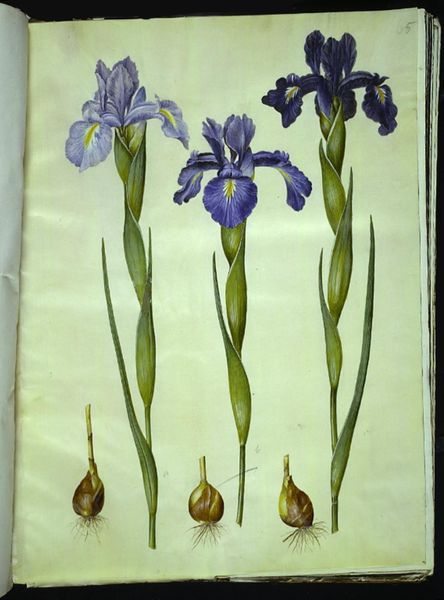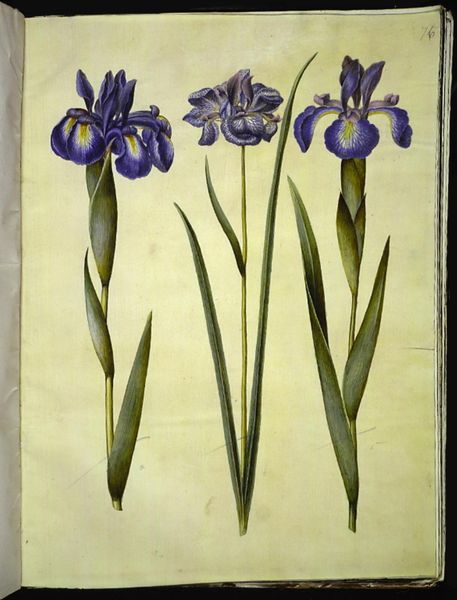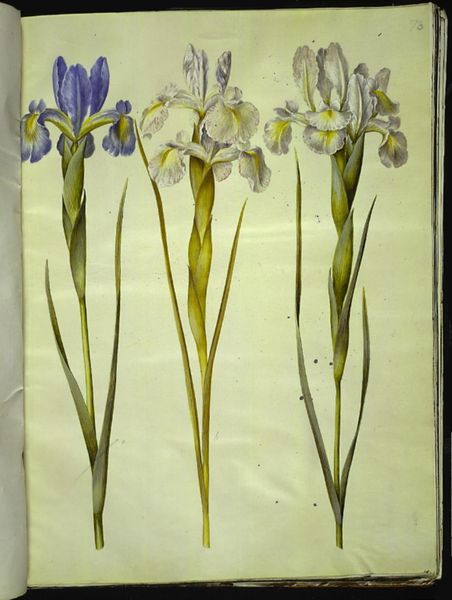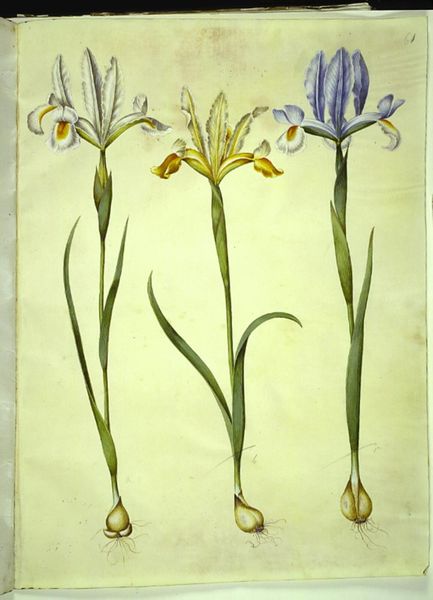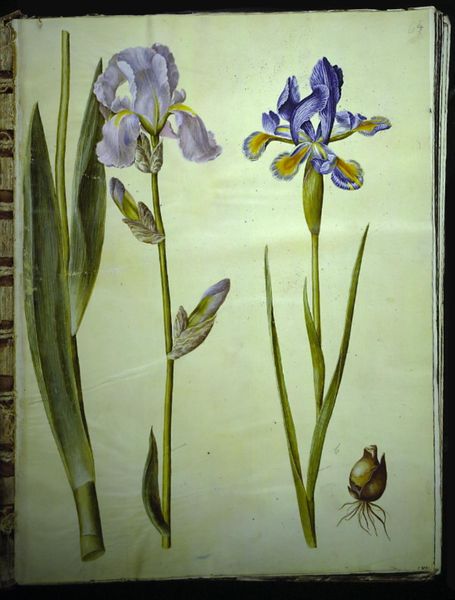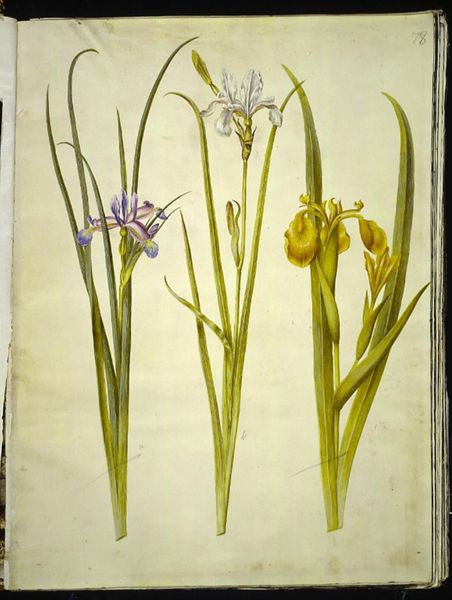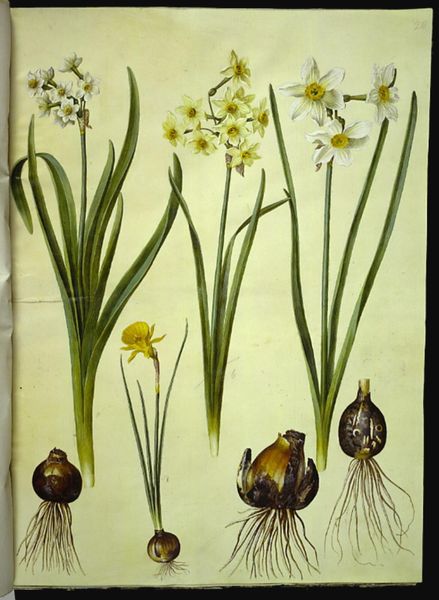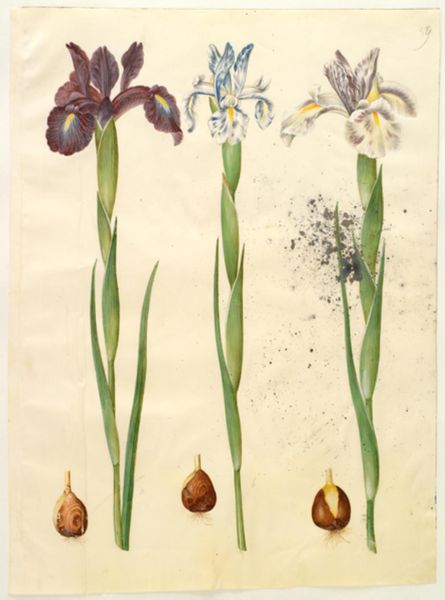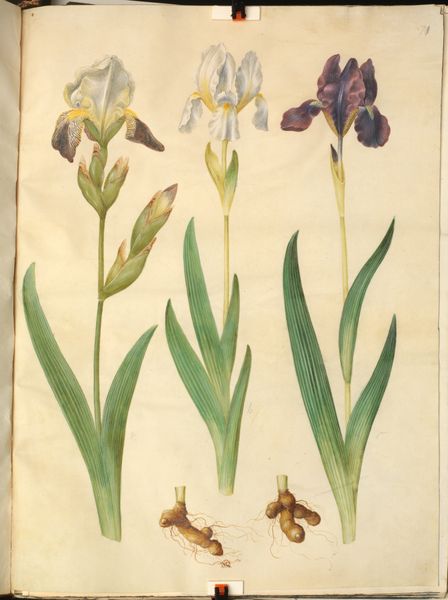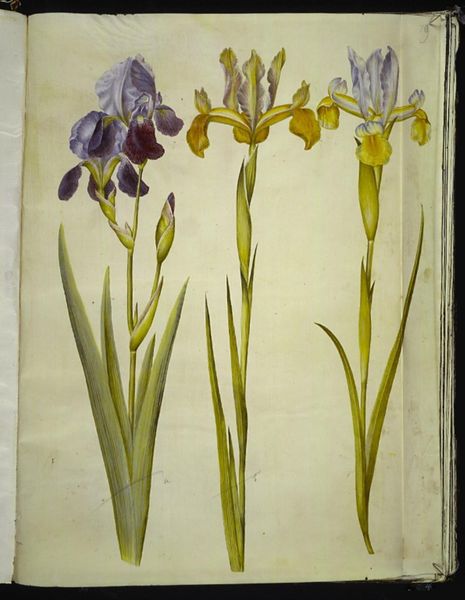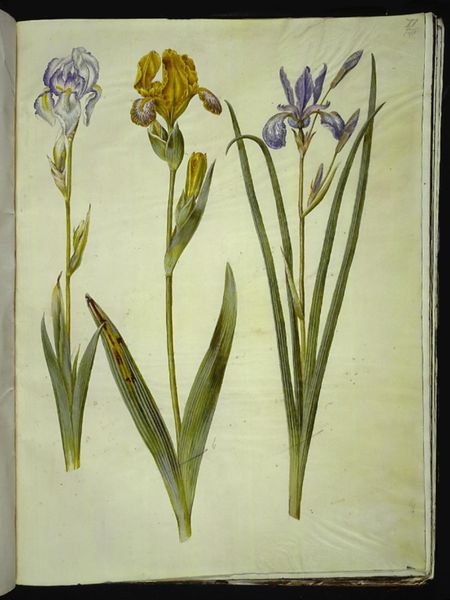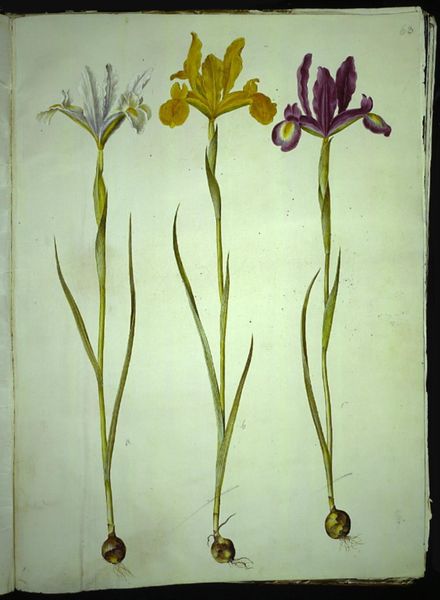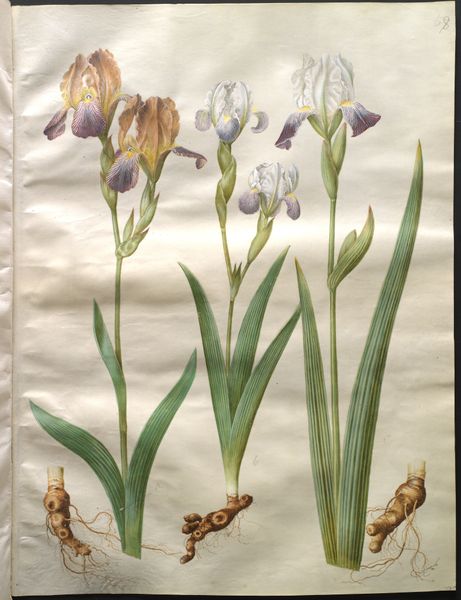
Iris latifolia (engelsk iris); Iris xiphium (spansk iris) 1649 - 1659
0:00
0:00
drawing, gouache, watercolor
#
drawing
#
gouache
#
watercolor
#
watercolour illustration
#
academic-art
#
watercolor
Dimensions: 505 mm (height) x 385 mm (width) (bladmaal)
Editor: This botanical illustration, "Iris latifolia; Iris xiphium," by Hans Simon Holtzbecker, created between 1649 and 1659, showcases three different irises with watercolor, gouache, and drawing. It’s currently held at the Statens Museum for Kunst. I'm really drawn to the level of detail in each of these flowers, but what do you notice first about the composition? Curator: The initial observation would center upon the meticulousness in rendering each specimen, adhering to an almost scientific detachment. Note how Holtzbecker delineates the forms with utmost precision, isolating them against a neutral backdrop. Consider the effect of the varying petal arrangements, contrasting the fluted edges of the white iris against the more structured forms of its counterparts. Are we looking at a formal taxonomy, or does the artist invite us to reflect on subtle shifts in morphology? Editor: That's an interesting way to put it, almost like a visual study! Do you see any symbolism at play, or is this purely a formal exploration of shapes and colors? Curator: Symbolism relies on context. In isolation, we appreciate the formal interplay of hues: the spectral range from pristine white to regal purple. Observe how the gradation in tones within each bloom contributes to the illusion of volume, enhanced by the delicate rendering of botanical details. Semiotically, do these variations in colour and form point to broader meanings? That invites further inquiry. Editor: So, you are saying, without understanding the original intent or cultural references, focusing on form and technique, gives access to another meaning of the piece? Curator: Precisely. The composition's arrangement, color harmonies, and textural nuances generate meaning beyond representation. This framework enables us to access, examine and interpret artistic production within specific contexts or structures, separate from what was initially intended by its creator. Editor: I never thought about analyzing art that way! It is fascinating. Thank you! Curator: The pleasure was mine. This allows one to build interpretive avenues based on purely what you observe about visual representation and theory.
Comments
No comments
Be the first to comment and join the conversation on the ultimate creative platform.
